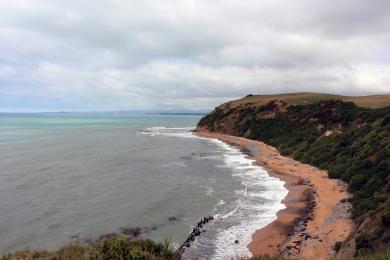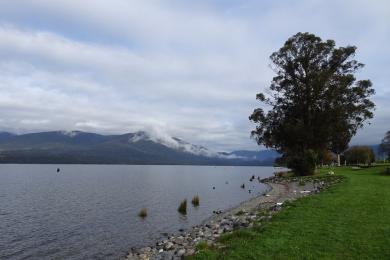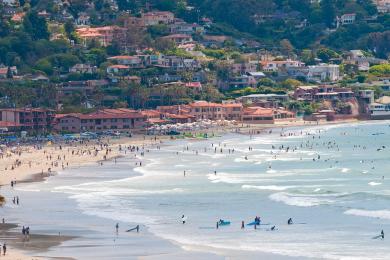Overview
The broadnose sevengill shark is distinguished from other sevengill sharks by its broad, flattened snout, which gives it its name. It has a distinctive, elongated body with seven gill slits on each side, unlike most sharks which have five. Its coloration is typically gray to brown, with a lighter underside.
Commonly found in:
- United States
- Canada
- Mexico
- Japan
- South Korea
- China
- Australia
- New Zealand
- South Africa
- Chile
- Peru
- Argentina
- Portugal
- Spain
- Morocco
Over the past 62 years, there have been 18 recorded attacks by the Broadnose Sevengill Shark. Of these attacks, they have occurred at sea and at the following beaches:
Size and Weight
- Size: Males average between 4.9-7.9 feet when mature; females average between 6.6-9.8 feet when mature
- Weight: Males typically weigh 200-300 pounds; females typically weigh 300-500 pounds
- Swimming speed: 2-3 mph on average
Interaction with Humans
- Interaction with Humans: Generally not aggressive, but may become curious or defensive if provoked
- Avoidance: Stay out of coastal waters during dusk, night, and dawn
- Activity: Most active at night and during twilight hours
Lifespan and Diet
- Lifespan: 30-50 years for both males and females
- Diet: Feeds on other sharks, rays, bony fishes, and marine mammals; hunts by ambush or slow stalking
Migratory Patterns
Broadnose Sevengill Sharks exhibit seasonal migration patterns. They move from deeper offshore waters to shallower coastal areas during spring and summer for breeding and pupping. In the eastern Pacific, they migrate along the coast from California to Alaska. In the southern hemisphere, they travel between South Africa and Namibia. Some populations in New Zealand show local movements between different bays and harbors throughout the year.






